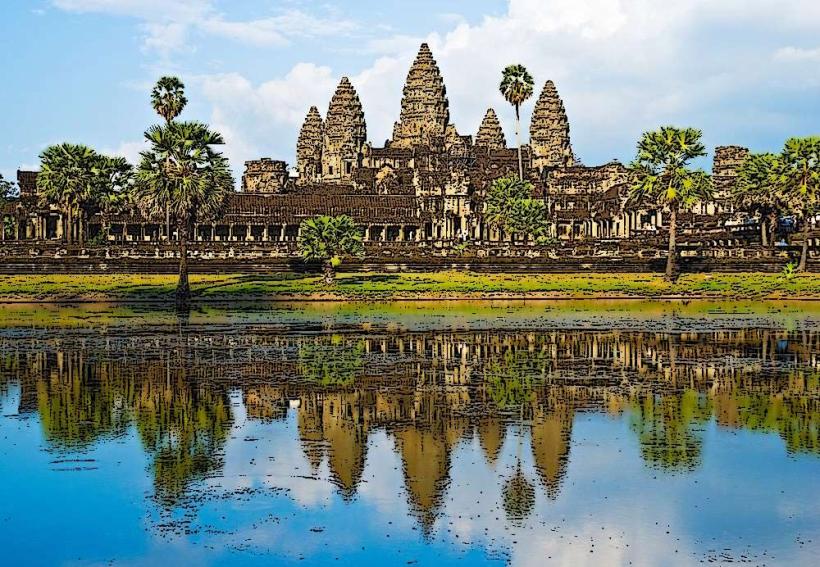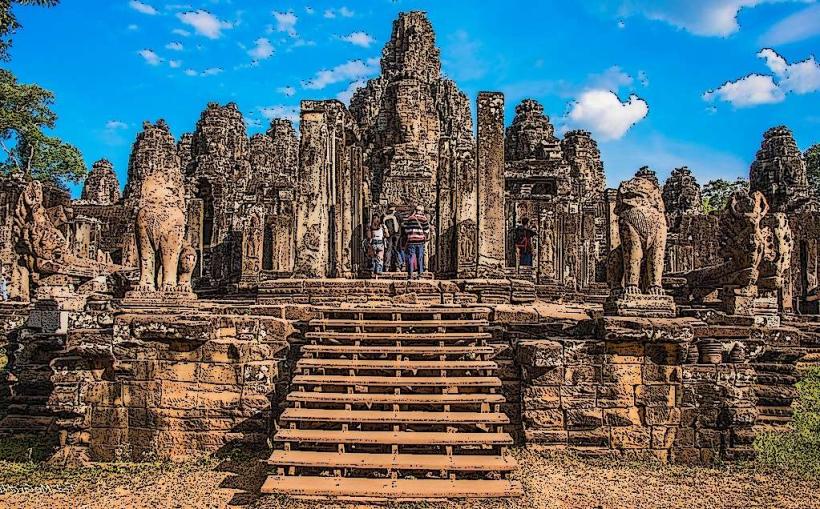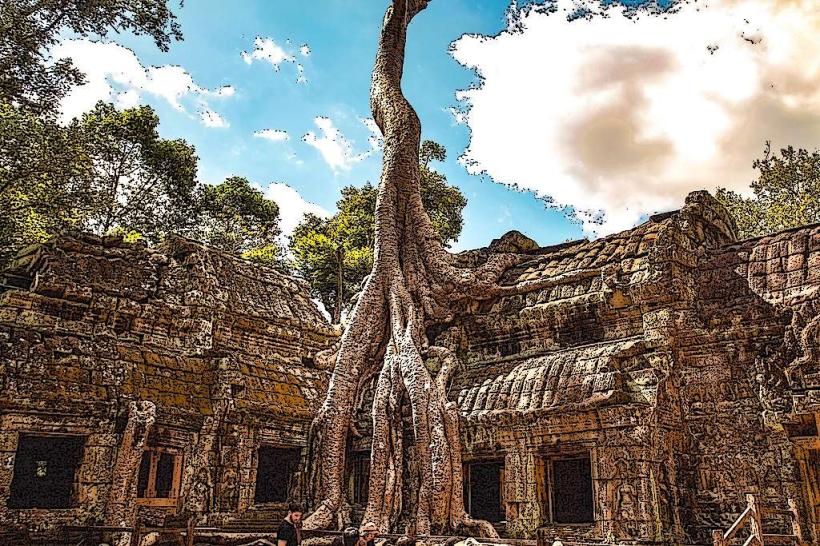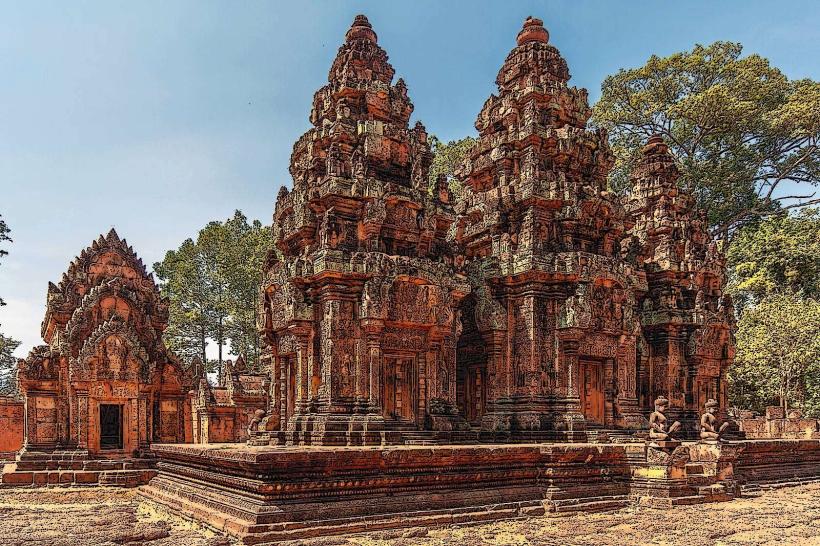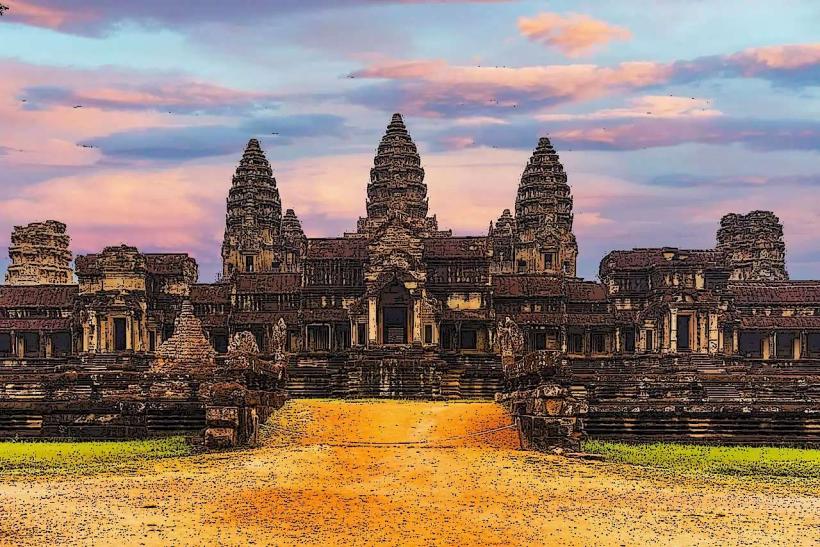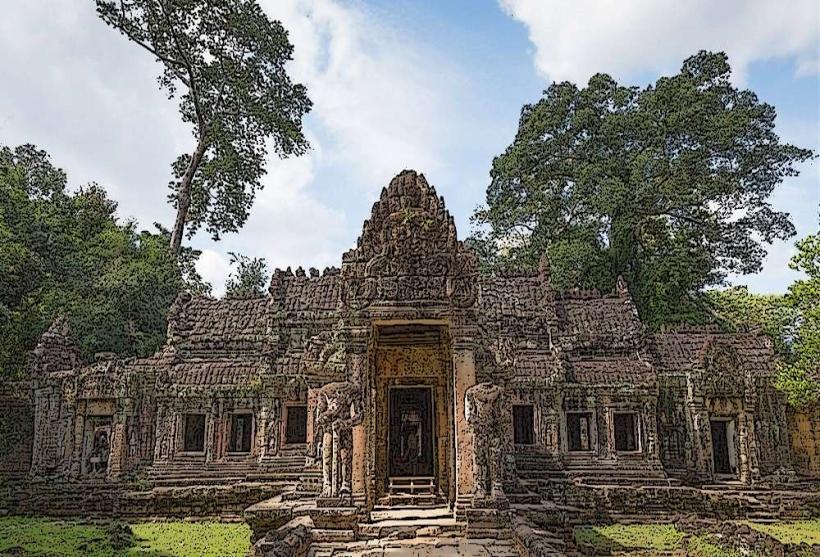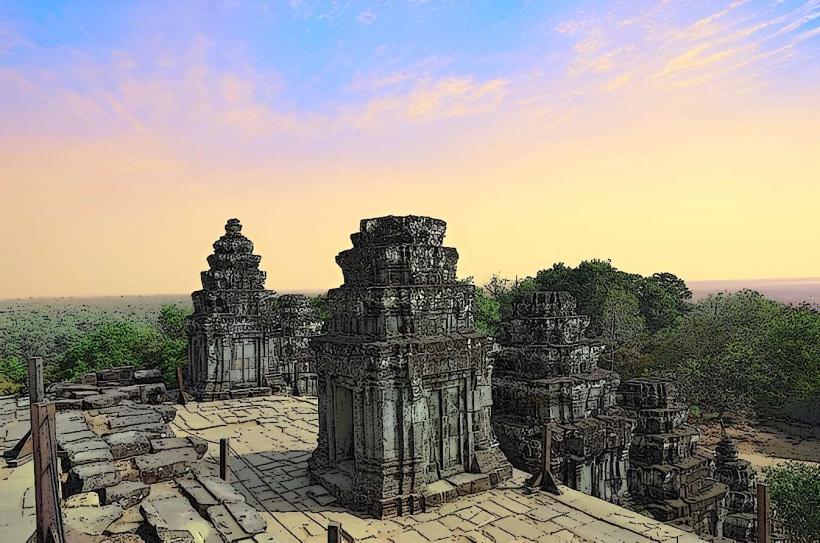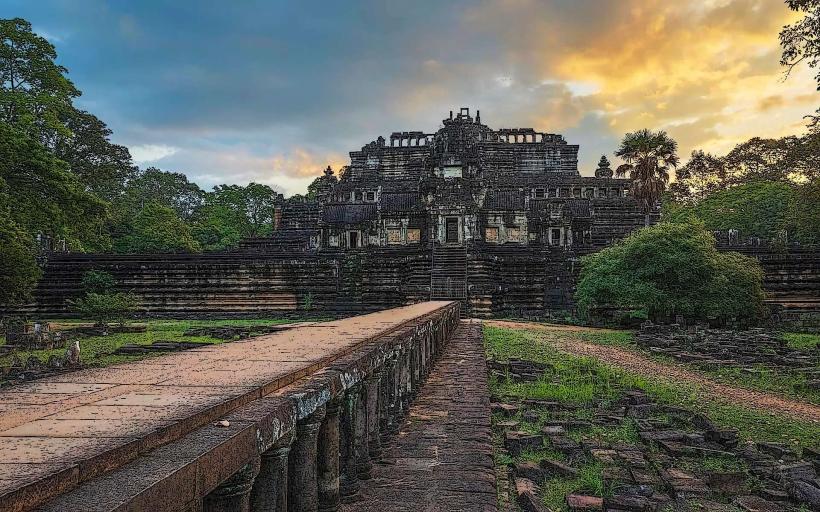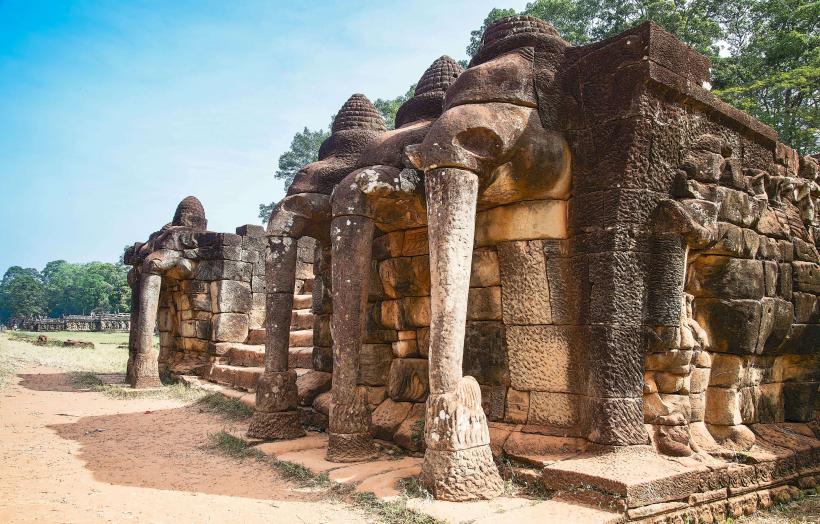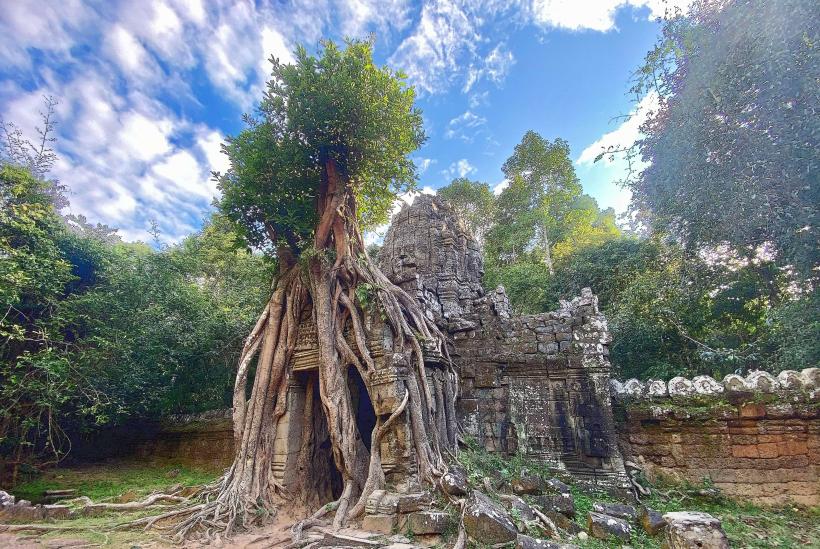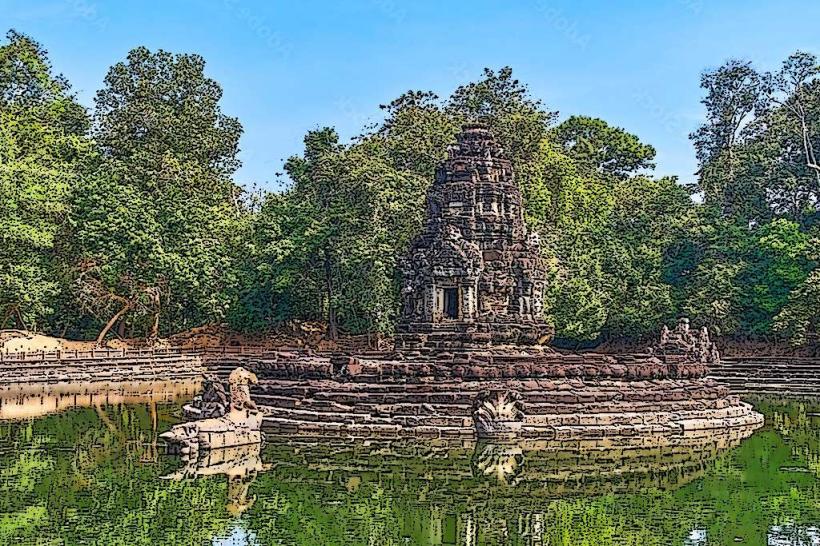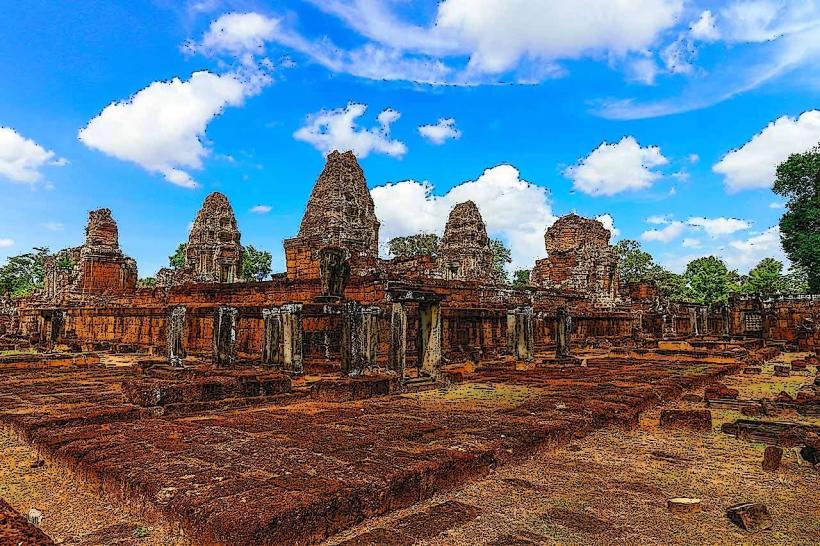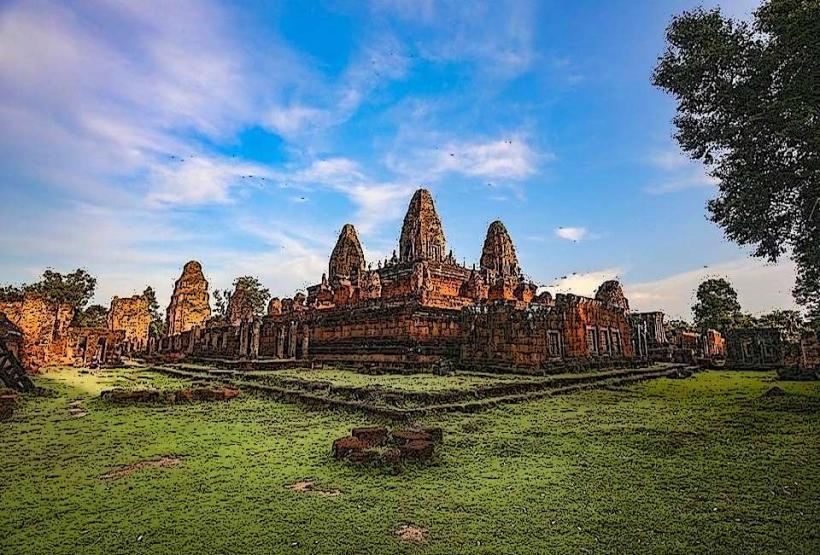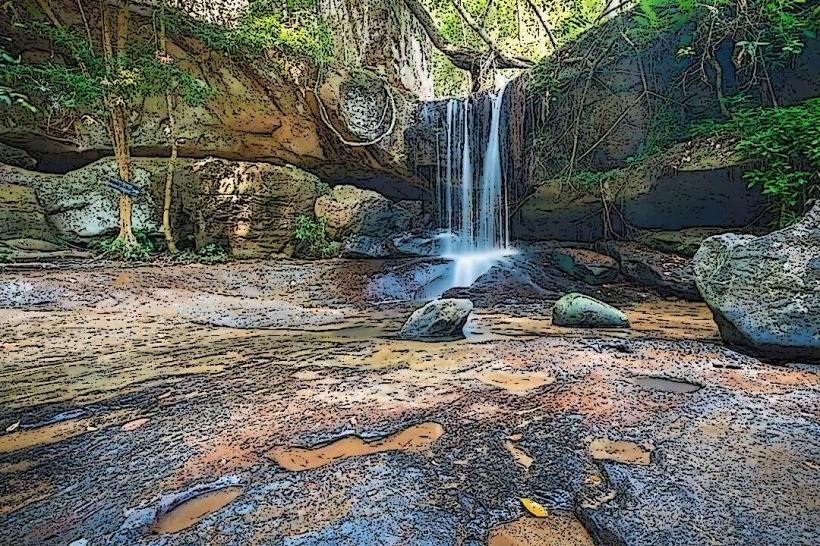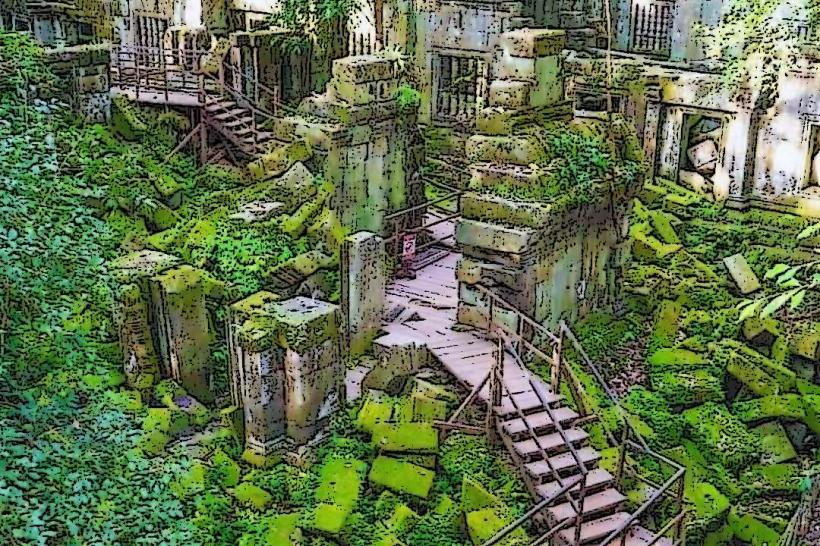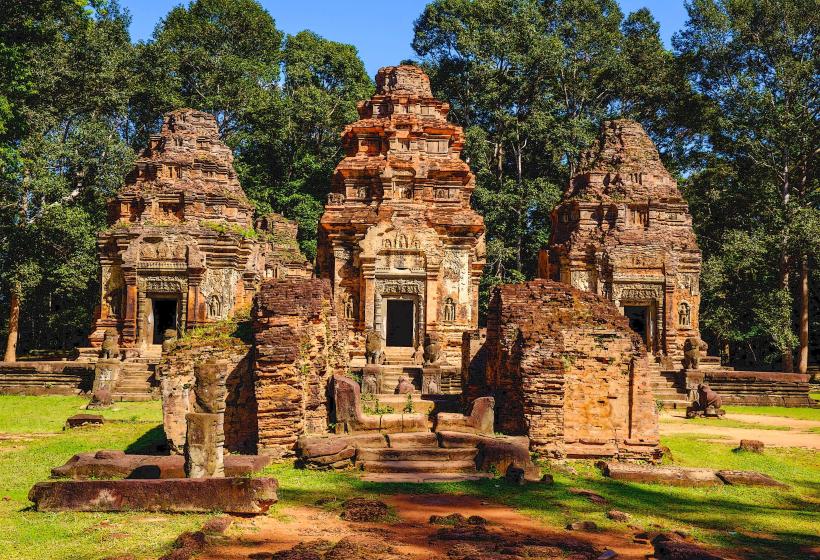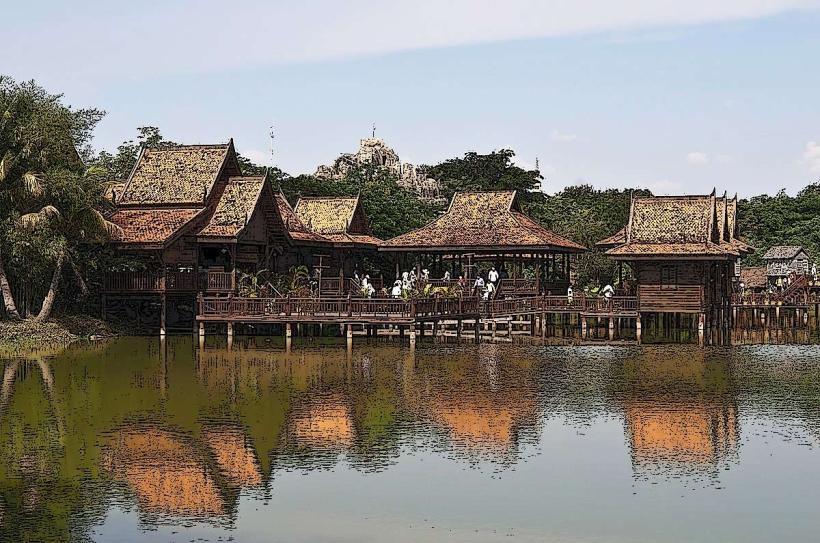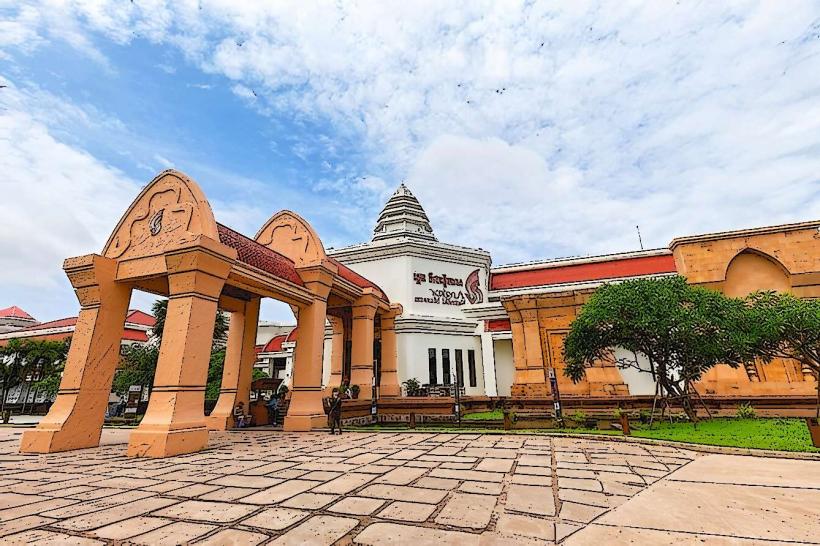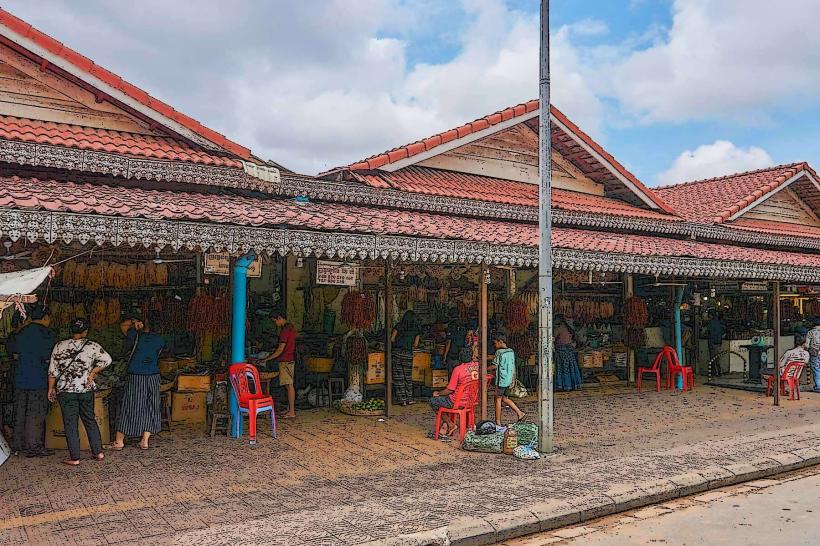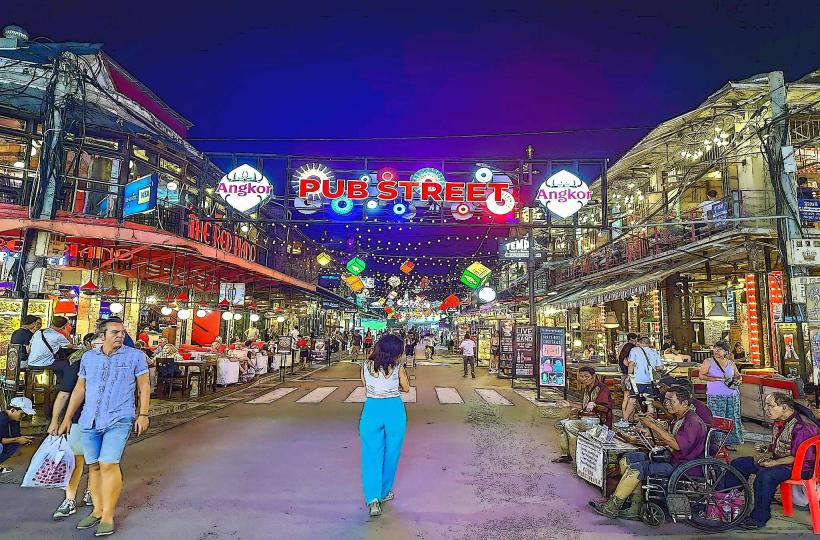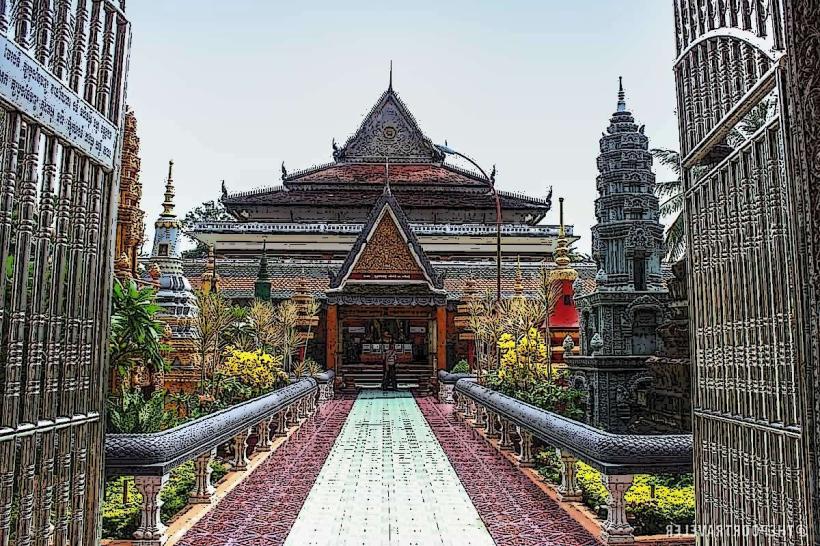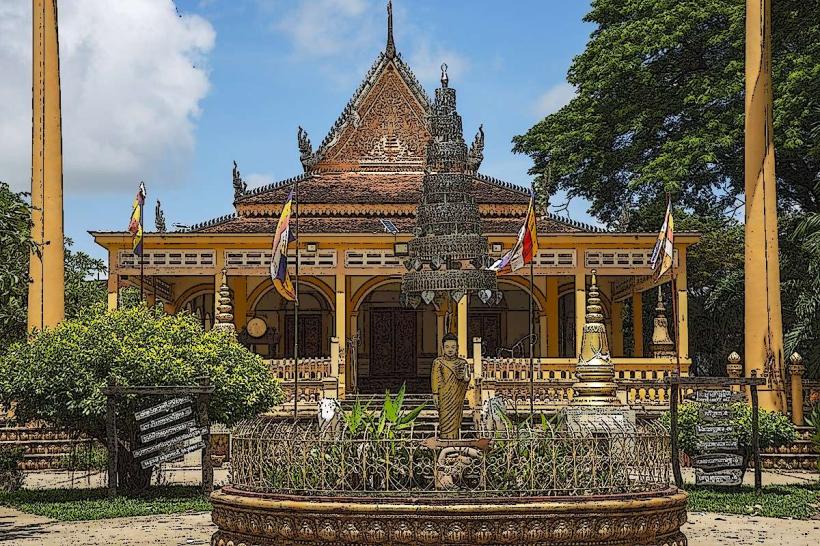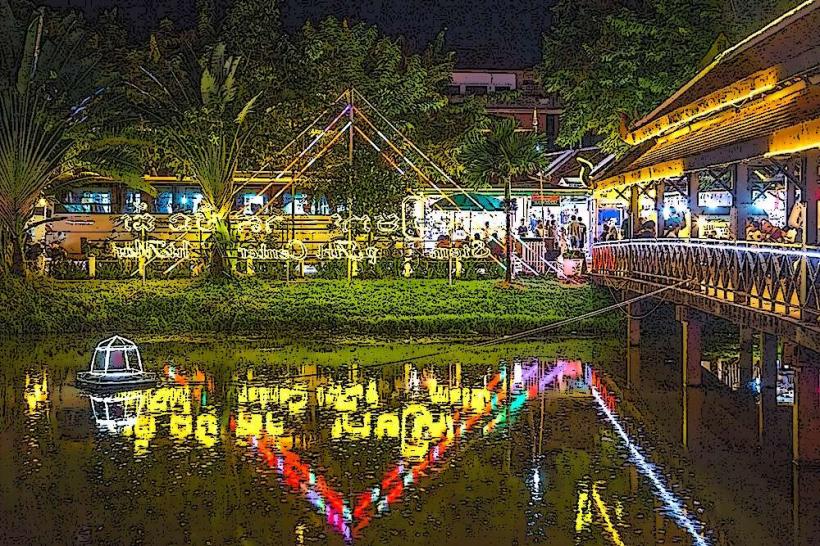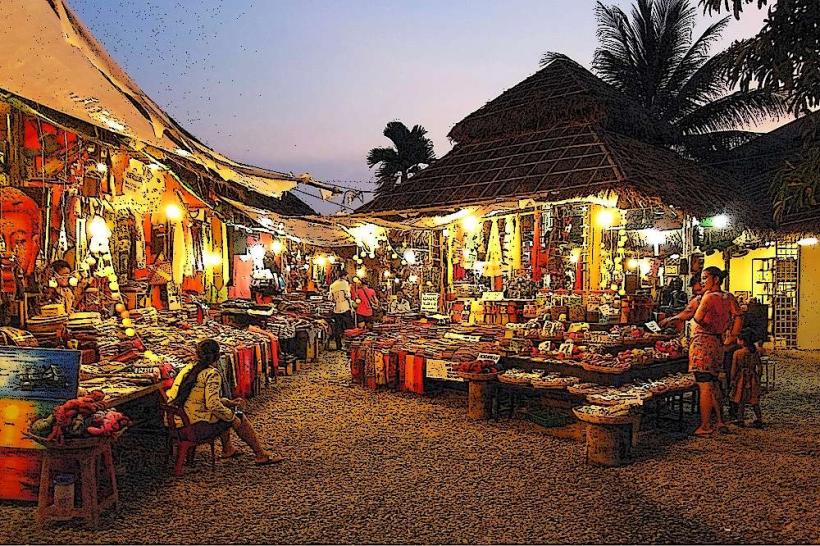Information
Landmark: Terrace of the Leper KingCity: Siem Reap
Country: Cambodia
Continent: Asia
Terrace of the Leper King – A Mysterious Royal Platform in Angkor Thom
The Terrace of the Leper King is one of the most intriguing and enigmatic structures in Angkor Thom, located just north of the Terrace of the Elephants. Built in the late 12th century by King Jayavarman VII, this intricately carved terrace is named after a mysterious statue that was found on top, believed to represent a legendary "Leper King" or the Hindu god Yama, the Lord of the Underworld.
The terrace is famous for its elaborate bas-reliefs, depicting mythical beings, celestial dancers, demons, and deities, creating an underground-like labyrinth of stone carvings.
History of the Terrace of the Leper King
- Constructed in the late 12th century during the reign of Jayavarman VII, the terrace was likely used as a royal platform for ceremonies or a cremation site.
- The name comes from a weathered statue found at the top, resembling a figure suffering from leprosy.
- Some theories suggest the statue represents King Yasovarman I, who was rumored to have had leprosy.
- Others believe it depicts Yama, the Hindu god of death and judgment, suggesting the terrace was a funerary structure.
- The original statue was moved to the National Museum in Phnom Penh, and a replica now sits on the terrace.
Architectural Features of the Terrace of the Leper King
1. The Multi-Layered Wall of Bas-Reliefs
- The terrace features two parallel walls, both covered in intricately carved bas-reliefs.
- The outer wall was originally built over an earlier inner wall, which was later uncovered, revealing well-preserved carvings.
- The carvings depict mythological creatures, celestial beings (Apsaras), nagas (serpents), and demons, possibly representing the underworld or a cosmic judgment scene.
2. The "Hidden Corridor"
- The narrow passageway between the two walls creates a maze-like atmosphere, making it feel like a secret chamber of carvings.
- Walking through this corridor gives an immersive experience, surrounded by detailed stone reliefs on both sides.
3. The Mysterious Statue of the Leper King
- The statue at the top is seated in a meditative pose, missing several fingers and appearing eroded.
- Its identity remains uncertain, with theories ranging from a Khmer king to a divine figure.
Theories and Symbolism
1. A Royal Cremation Site
- Some historians believe the terrace functioned as a royal cremation site, where Khmer kings were ritually burned after death.
- The presence of Yama-like carvings supports the theory that the terrace was associated with death and the afterlife.
2. Representation of the Underworld
- The deep, layered walls filled with carvings of gods, demons, and celestial figures resemble a descent into the mythical underworld.
- This suggests the terrace might have symbolized a journey through judgment and reincarnation.
3. The Leper King Legend
- Some believe the name comes from a Khmer king (possibly Yasovarman I or Jayavarman VII) who suffered from leprosy.
- The moss-covered statue gave the illusion of leprosy-like skin, reinforcing the legend.
Visiting the Terrace of the Leper King
1. Best Time to Visit
- Early morning or late afternoon to avoid harsh sunlight, as the carvings are best viewed in softer light.
- Exploring the hidden corridor is especially rewarding during quieter hours.
2. Getting There
- Located inside Angkor Thom, just north of the Terrace of the Elephants and near the Royal Palace ruins.
- Easily accessible by bicycle, tuk-tuk, or a guided tour from Angkor Wat or Siem Reap.
3. What to Expect
- A maze-like stone corridor with some of the best-preserved bas-reliefs in Angkor Thom.
- A seated statue on top with an eerie presence and historical mystery.
- A unique contrast to other temples, with its compact, carved passageways giving a sense of immersion in Khmer mythology.
Conclusion
The Terrace of the Leper King is a fascinating and mysterious site, offering a glimpse into Khmer mythology, royal rituals, and ancient beliefs about death and the afterlife. Its intricate carvings, hidden corridors, and legendary statue make it a must-visit for those exploring the wonders of Angkor Thom.

